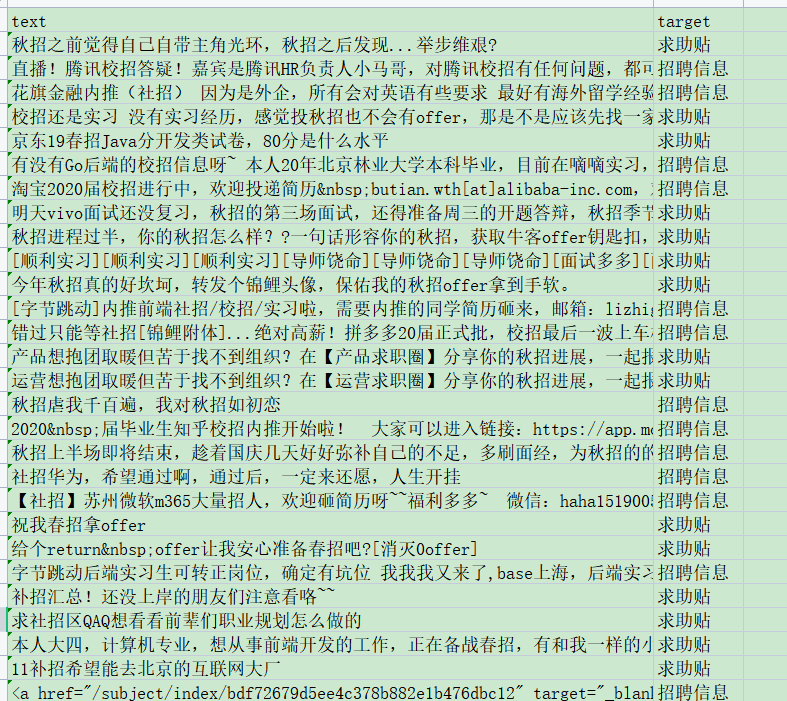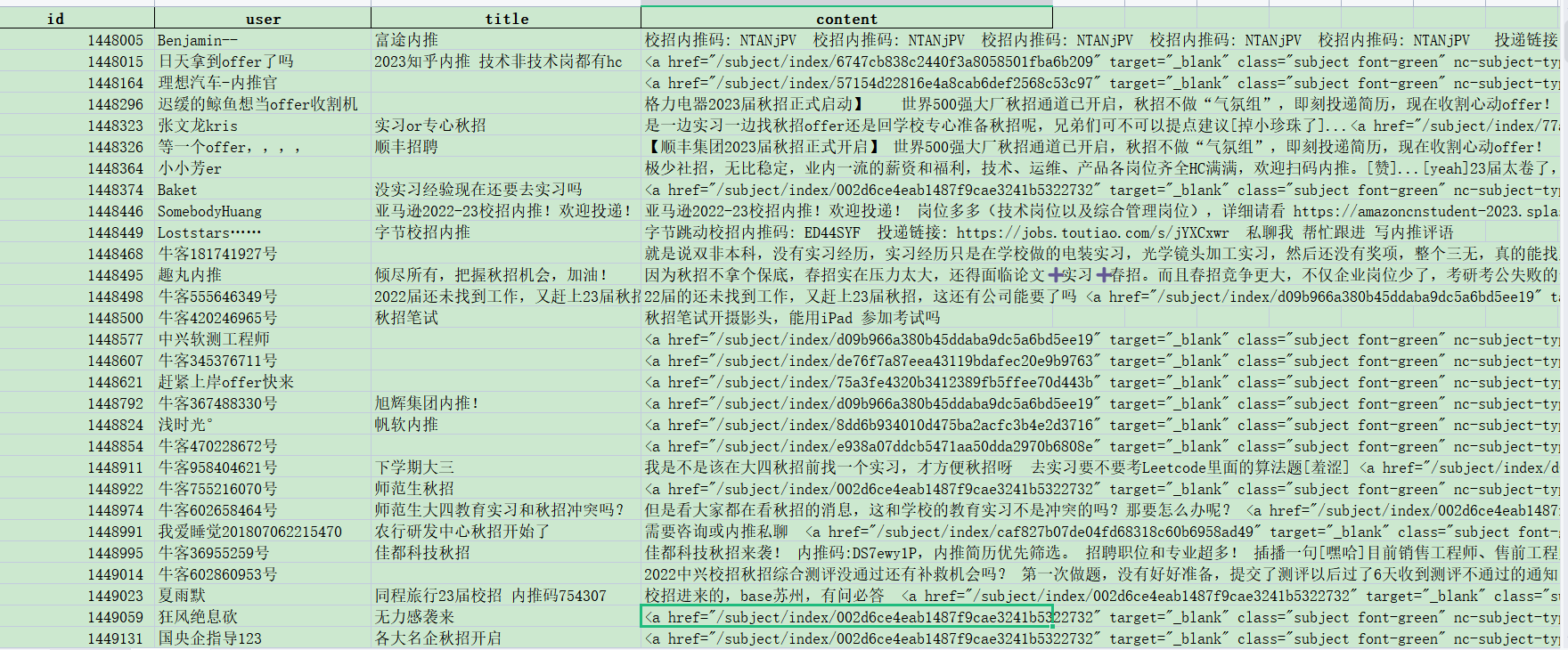1
2
3
4
5
6
7
8
9
10
11
12
13
14
15
16
17
18
19
20
21
22
23
24
25
26
27
28
29
30
31
32
33
34
35
36
37
38
39
40
41
42
43
44
45
46
47
48
49
50
51
52
53
54
55
56
57
58
59
60
61
62
63
64
65
66
67
68
69
70
71
72
73
74
75
76
77
78
79
80
81
82
83
84
85
86
87
88
89
90
91
92
93
94
95
96
97
| import pandas as pd
import numpy as np
from datasets import load_dataset
from transformers import AutoTokenizer, AutoModelForMaskedLM, AutoModelForSequenceClassification
from transformers import TrainingArguments, Trainer
from sklearn.metrics import f1_score, roc_auc_score, accuracy_score, classification_report
from transformers import EvalPrediction
import evaluate
metric = evaluate.load("seqeval")
model_name = "uer/chinese_roberta_L-4_H-512"
tokenizer = AutoTokenizer.from_pretrained(model_name)
max_input_length = 128
label2id = {
'招聘信息':0,
'经验贴':1,
'求助贴':2
}
id2label = {v:k for k,v in label2id.items()}
def preprocess_function(examples):
model_inputs = tokenizer(examples["text"], max_length=max_input_length, truncation=True)
labels = [label2id[x] for x in examples['target']]
model_inputs["labels"] = labels
return model_inputs
raw_datasets = load_dataset('csv', data_files={'train': 'train.csv', 'test': 'test.csv'})
tokenized_datasets = raw_datasets.map(preprocess_function, batched=True, remove_columns=raw_datasets['train'].column_names)
def multi_label_metrics(predictions, labels, threshold=0.5):
probs = np.argmax( predictions, -1)
y_true = labels
f1_micro_average = f1_score(y_true=y_true, y_pred=probs, average='micro')
accuracy = accuracy_score(y_true, probs)
print(classification_report([id2label[x] for x in y_true], [id2label[x] for x in probs]))
metrics = {'f1': f1_micro_average,
'accuracy': accuracy}
return metrics
def compute_metrics(p: EvalPrediction):
preds = p.predictions[0] if isinstance(p.predictions, tuple) else p.predictions
result = multi_label_metrics(predictions=preds, labels=p.label_ids)
return result
model = AutoModelForSequenceClassification.from_pretrained(model_name,
num_labels=3,
)
batch_size = 64
metric_name = "f1"
training_args = TrainingArguments(
f"/root/autodl-tmp/run",
evaluation_strategy = "epoch",
save_strategy = "epoch",
learning_rate=2e-4,
per_device_train_batch_size=batch_size,
per_device_eval_batch_size=batch_size,
num_train_epochs=10,
save_total_limit=1,
weight_decay=0.01,
load_best_model_at_end=True,
metric_for_best_model=metric_name,
fp16=True,
)
trainer = Trainer(
model,
training_args,
train_dataset=tokenized_datasets["train"],
eval_dataset=tokenized_datasets["test"],
tokenizer=tokenizer,
compute_metrics=compute_metrics
)
trainer.train()
print("test")
print(trainer.evaluate())
trainer.save_model("bert")
predictions, labels, _ = trainer.predict(tokenized_datasets["test"])
predictions = np.argmax(predictions, axis=-1)
print(predictions)
print(labels)
|


